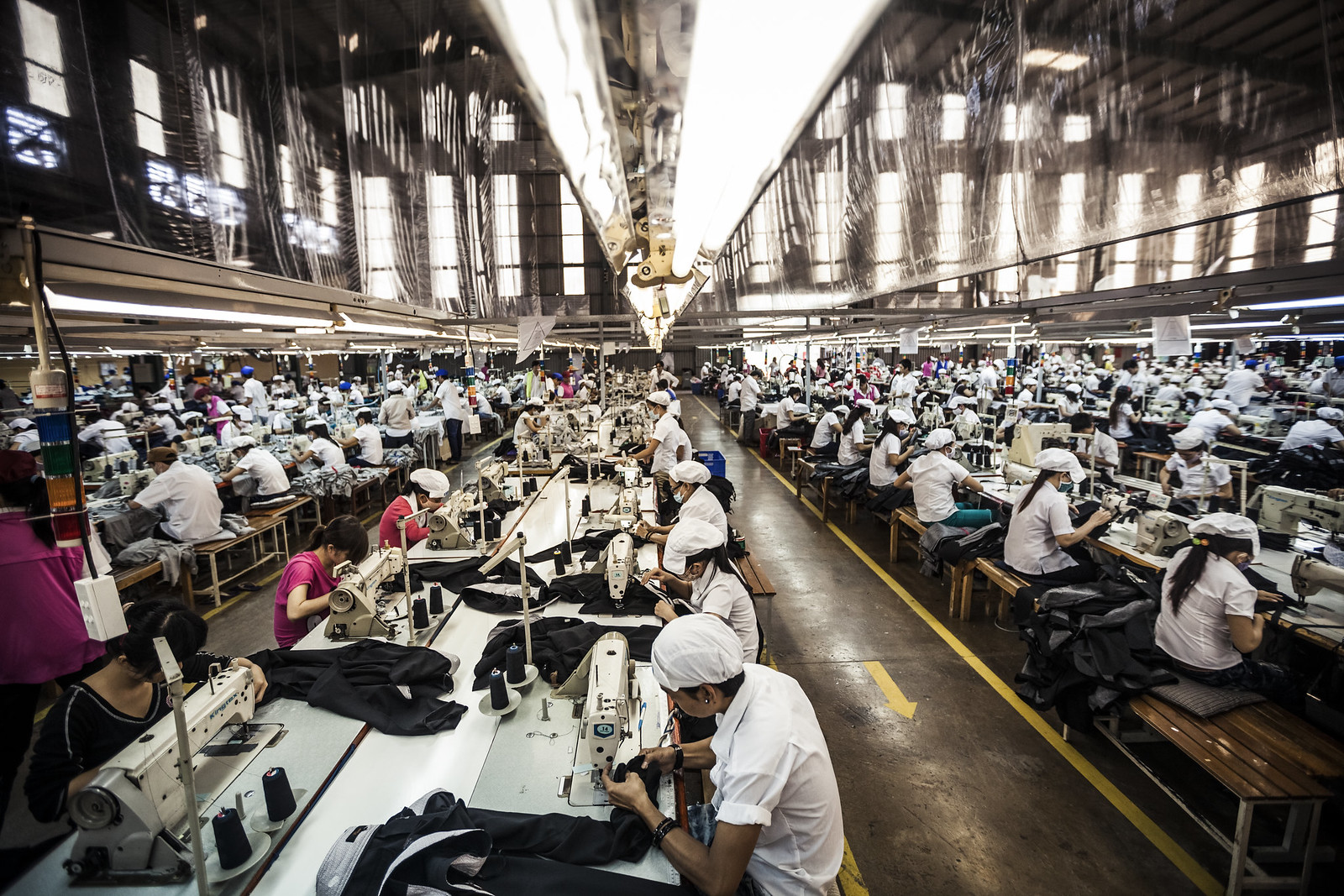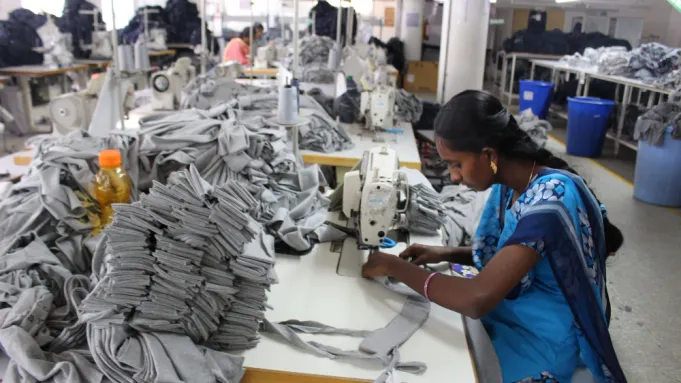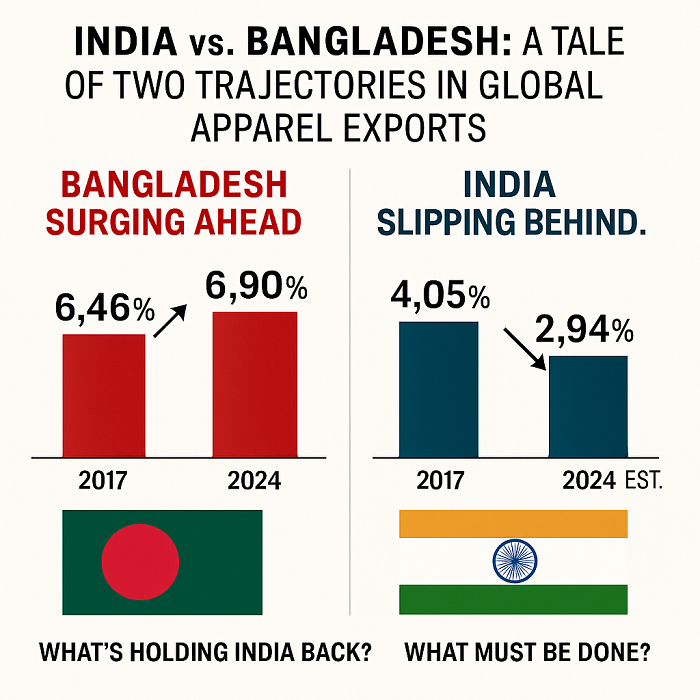
For decades, the fashion and apparel world has returned to a seemingly settled argument: does mass production sacrifice quality, and is Made-to-Measure (MTM) the only path to excellence? The answer, long framed as a straightforward binary, is now being re-examined in the light of evolving manufacturing models, technological advancements, and a renewed focus on human capital. Beneath the surface lies a far more nuanced truth—one that pivots less on format, and more on investment, intent, and execution.
A tale of two philosophies
At the heart of the debate is a philosophical divergence in production logic. Mass manufacturing prioritizes efficiency—streamlined operations, standardized processes, and economies of scale. This system powers much of the global fashion industry, churning out garments at a fraction of the cost of custom apparel. However, it often attracts criticism for promoting speed over skill, and volume over value.
MTM, by contrast, embodies an artisanal approach. With its bespoke fittings, skilled tailoring, and time-intensive production cycles, it’s considered the gold standard of craftsmanship. ‘Fit, finesse, and finish’, says one industry veteran, aren’t just incidental—they’re built into the process. But is that distinction as definitive as it once seemed?
The mass production myth
Contrary to popular belief, mass production does not inherently preclude quality. It is, however, deeply influenced by the operational choices and priorities of the manufacturer. “Mass production and high quality can coexist,” affirms a seasoned production head at a global apparel brand. “But only if we invest in our people and choose to aim higher.”
The primary challenge with large-scale production lies in its vulnerability to systemic flaws. One mistake in an early stage of the production line—be it in cutting, stitching, or quality control—can replicate across thousands of units. This is what leads to the frequent product recalls that plague fast fashion brands. Yet, this vulnerability is not inevitable.
Advanced manufacturers have shown that a combination of smart automation, continuous upskilling, and rigorous quality protocols can deliver products that rival bespoke tailoring. When individual sewers are trained not just to perform a task, but to understand why precision matters, the outcome shifts dramatically.
The economics of accessibility
Much of mass production’s appeal lies in its economics. By distributing fixed costs across high volumes and leveraging standardized designs and machines, the per-unit cost of garments drops sharply. This makes clothing accessible to a wider demographic and fuels the explosive growth of global fashion markets.
In contrast, MTM garments command a premium—often five to ten times higher than their off-the-rack counterparts. The higher price accounts for personalized fittings, skilled labor, and, frequently, a blend of machine and hand-sewn craftsmanship. For many consumers, particularly in mature markets, the allure lies in individuality and perceived superior quality.
The divergent paths of mass production and MTM are reflected in market data. The global garment manufacturing market—dominated by mass production—is expected to grow from $439.29 billion in 2024 to $517.74 billion by 2033, at a CAGR of 1.84 per cent. This scale-driven model shows steady, if unspectacular, growth. By contrast, the MTM market is booming. Projected to increase from $54.76 billion in 2024 to $124.55 billion by 2033, it’s growing at a CAGR of 9.56 per cent.
Table: Made-to-Measure market growth (2024–2033)
|
Year |
Market size ($ bn) |
CAGR (2025-2033) |
|
2024 |
54.76 |
9.56% |
|
2025 (Projected) |
59.99 |
|
|
2033 (Projected) |
124.55 |
Sources: Global Growth Insights, 2025
This rise is due to three trends: a 65 per cent rise in consumer demand for personalization, a 60 per cent increase in digital customization technologies, and a 58 per cent shift towards sustainability-oriented buying behavior.
Quality: Intrinsic vs. Perceived
Consumer perception of “quality” is a complex interplay of variables—fabric, construction, brand equity, and even fit. MTM often wins the perception battle by delivering a garment that not only looks better but feels like it was made for the wearer—because it was.
Mass-produced garments, even when technically sound, are often seen as generic. Yet, several high-end brands that operate at scale are proving otherwise. Through strategic investment in lean manufacturing, automation, and workforce development, they’ve managed to maintain both volume and consistency. Brands sourcing from these advanced suppliers—often located in Bangladesh, Vietnam, and parts of India—can meet demanding global quality benchmarks.
For example, take vertically integrated manufacturers working with global mid-premium brands. These companies employ real-time defect tracking, AI-based inspection systems, and worker feedback loops. Many are also integrating sustainable practices—using organic fibers, water-saving dyeing methods, and ethical labor models. These improvements often translate into higher worker satisfaction and lower turnover—factors closely tied to garment quality. Sustainability and quality, once considered trade-offs in the mass market, are increasingly complementary.
The Verdict: Quality is a choice
So, is MTM better than mass production?
The answer is, it depends. What determines quality is not how a garment is produced, but why and with what commitment. When cost-efficiency trumps all else, mass production can fall short. But when factories prioritize excellence—through training, quality control, and respect for their workforce—the results can rival any atelier.
Meanwhile, MTM’s allure will continue to grow among consumers who value fit, expression, and exclusivity. Its higher cost structure may limit accessibility, but its cultural and aesthetic value is undeniable. Both models serve distinct, yet increasingly overlapping, market segments. MTM is learning from the efficiencies of mass production, while mass manufacturers are adopting craftsmanship principles once thought exclusive to bespoke tailors. Indeed, the future isn’t about choosing one over the other—it’s about integrating the best of both.











